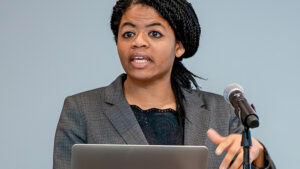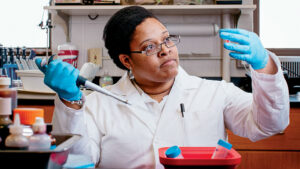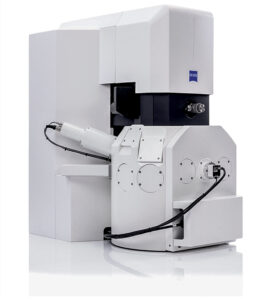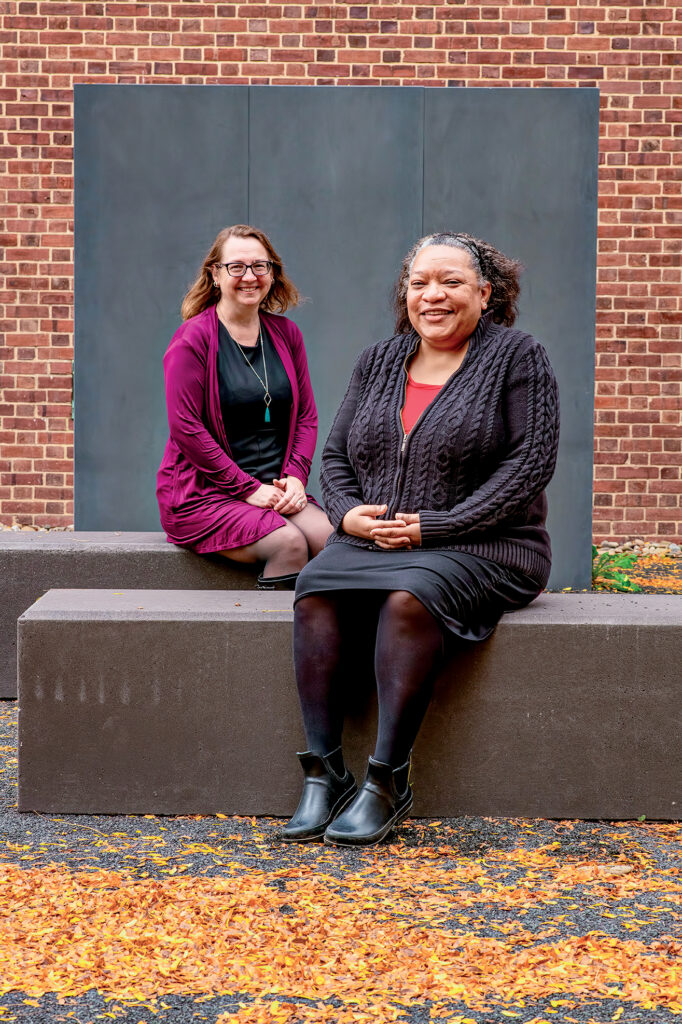News Briefs
Creating Inclusive Classrooms
New student survey tool helps faculty create welcoming environment
Academic institutions have long been questioning how to make sure all students receive the type of instruction they need to successfully complete their degree, as well as how to build on their differences and strengths to foster a more inclusive classroom. Now, a new survey tool may help incorporate students’ varied experiences to aid their instructors in embracing every type of learner.

Tracie Addy, associate dean of teaching and learning
Tracie Addy, associate dean of teaching and learning, Khadijah Mitchell, Peter C.S. d’Aubermont, M.D., Scholar of Health and Life Sciences, and Derek Dube, associate professor of biology at University of Saint Joseph, collaborated to create a survey tool called “Who’s In Class?” It enables students to anonymously submit information about themselves to help instructors design a more inclusive learning environment at the beginning of a course. Students’ feedback enables faculty to adjust their courses and tweak their teaching efforts to make classes more equitable and welcoming. It was piloted successfully in spring semester and was used in additional courses at the start of fall semester.

Khadijah Mitchell, Peter C.S. d’Aubermont, M.D., Scholar of Health and Life Sciences
“Throughout my graduate training, I wasn’t taught how to teach inclusively. I think about that a lot in my classroom now—who’s not at the table or whose voice is not being heard,” Mitchell says. “As a first-generation student and woman of color in STEM, it’s important to me that I consider the things that you don’t see and to be the professor that I didn’t always have.”
Elevating Teaching and Research
Lafayette to acquire cutting-edge scanning electron microscope
 Lafayette faculty are looking forward to the arrival of a Carl Zeiss EVO scanning electron microscope (SEM), a powerful, sophisticated piece of equipment that will advance research across several disciplines. The EVO (shown at right) allows imaging of a variety of materials at the nanoscale, using different detection modes, including correlation of electron microscopy and optical microscopy. The National Science Foundation awarded Lafayette the grant to acquire the SEM, which will be housed in Rockwell Integrated Sciences Center. Such equipment is relatively rare at an undergraduate institution, but faculty were able to make a strong case for the SEM enabling high-level research and educational opportunities. Faculty and students from biology, chemical and biomechanical engineering, civil engineering, environmental science, geology, neuroscience, and physics will use the EVO.
Lafayette faculty are looking forward to the arrival of a Carl Zeiss EVO scanning electron microscope (SEM), a powerful, sophisticated piece of equipment that will advance research across several disciplines. The EVO (shown at right) allows imaging of a variety of materials at the nanoscale, using different detection modes, including correlation of electron microscopy and optical microscopy. The National Science Foundation awarded Lafayette the grant to acquire the SEM, which will be housed in Rockwell Integrated Sciences Center. Such equipment is relatively rare at an undergraduate institution, but faculty were able to make a strong case for the SEM enabling high-level research and educational opportunities. Faculty and students from biology, chemical and biomechanical engineering, civil engineering, environmental science, geology, neuroscience, and physics will use the EVO.
Here are a few ways it will enhance research
Physics: Characterize nanoparticles with a degree of detail that previously was not possible at Lafayette. “In my research, it’s important to know details like particle size and shape, as well as how the particles interact to form larger nanostructures,” says Zoe Boekelheide, assistant professor of physics.
Geology: Investigate compositional zoning in minerals. “It will permit us to reconstruct histories of magmatic evolution and destabilization leading up to hazardous volcanic eruptions,” says Tamara Carley, assistant professor of geology. “It elevates our teaching and research potential to the next level.”
Biology: Better understand photo reception in turtles’ eyes. “It’s a sophisticated piece of equipment many faculty and students will be able to use in a hands-on fashion,” says James Dearworth, associate professor of biology. “But we will also be able to use it as a tool of demonstration—I can televise and record my work as I use it.”
STEM Success—for All
New Hanson Center co-directors are working to infuse inclusiveness into curriculum and culture
by Katie Neitz
While inclusiveness is a priority in all academic disciplines, data show a pressing need in STEM-related fields, where there are significant gender and racial gaps. Although women fill close to half of all jobs in the U.S. economy, they hold less than 25% of STEM jobs, according to the U.S. Dept. of Commerce. And in 2017, the Government Accountability Office concluded that racial and ethnic minorities remain underrepresented in the science and technology workforce.

Jenn Rossmann (left) and Chawne Kimber (right)
Bridging those gaps isn’t easy and requires a dedicated, sustained effort. Fortunately, the College has two champions of inclusive STEM who are working to support and empower those who have historically been underrepresented so they can thrive.
In August, the College named Chawne Kimber, professor of mathematics, and Jenn Rossmann, professor of mechanical engineering, co-directors of the Daniel and Heidi Hanson ’91 Center for Inclusive STEM Education. Both Kimber and Rossmann have been long driving the charge for inclusive STEM at the College. Many faculty members have been working to improve curriculum and create opportunities for students. Kimber and Rossmann are working to expand those efforts to create collaborative, lasting changes that will make inclusive STEM part of the campus culture.
The Hanson Center, made possible by a gift from Daniel and Heidi Hanson ’91 in 2017, is a home for research and programming to support underrepresented students and faculty in STEM disciplines. A long-range goal of the center is to shift the demographics in STEM at Lafayette and broaden the conversation regarding the need for more diversity in STEM-related fields.
Here, Kimber and Rossmann share their plans and ambitions for the Hanson Center.
Building “a Flourishing Ecosystem”
While the Hanson Center has a physical space on campus within Rockwell Integrated Sciences Center, the center’s work is not limited to those four walls. “The work of the center is meant to infuse classes and curricula across campus—and in the virtual space,” Rossmann says. “We want to build a sense of shared community and shared purpose,” Kimber adds. “The pandemic poses challenges—our community is now a virtual community. But we think that we can make that into an opportunity. We are having conversations about how to take inclusive practices online.”
Supporting Students
“Our goal is for students to succeed because of the environment—not in spite of it,” Rossmann says. To that end, the center is providing mentoring and networking opportunities and working to identify resources that can help students find success on campus—and beyond. “It’s not about recruitment or retention—it’s about building a community,” Kimber says. “We want to pay attention to the success of students and see how they are doing years after they leave us. That will help us understand what kind of preparation we can give them to make up for gaps.”
Strengthening Faculty Connections
The center also will help faculty from historically marginalized groups make connections. “A number of programs for faculty exist; our hope is to connect them, coordinate them, and help those who have been running them ensure they are sustainable,” Rossmann says. “We want to make sure these programs are built into place and part of the institution.” The center will provide resources for all faculty: Rossmann and Kimber want to help faculty develop new classroom skills and learn from each other to ensure that best practices for inclusive classes and curricula are being implemented, developed, and shared across disciplines at Lafayette.
Developing STEM Studies
While many other institutions have inclusive STEM programming, something that sets the Hanson Center apart is that Rossmann and Kimber also will coordinate inclusive STEM studies teaching and research to further understanding of how society, culture, and social justice interact with STEM: viewing STEM practices and products through lenses of history, sociology, ethnic studies, gender studies, and other methodologies. “The curriculum will combine these ideas of inclusion, equity, and justice, because it’s not just that STEM classrooms, workplaces, and products are better when a team is more diverse,” Rossmann says. “It’s also a matter of justice; appreciating STEM’s impact and interaction with society, the STEM community should be representative of the society it serves.” Kimber adds: “Who isn’t in STEM? Who is being left behind by being left behind?”